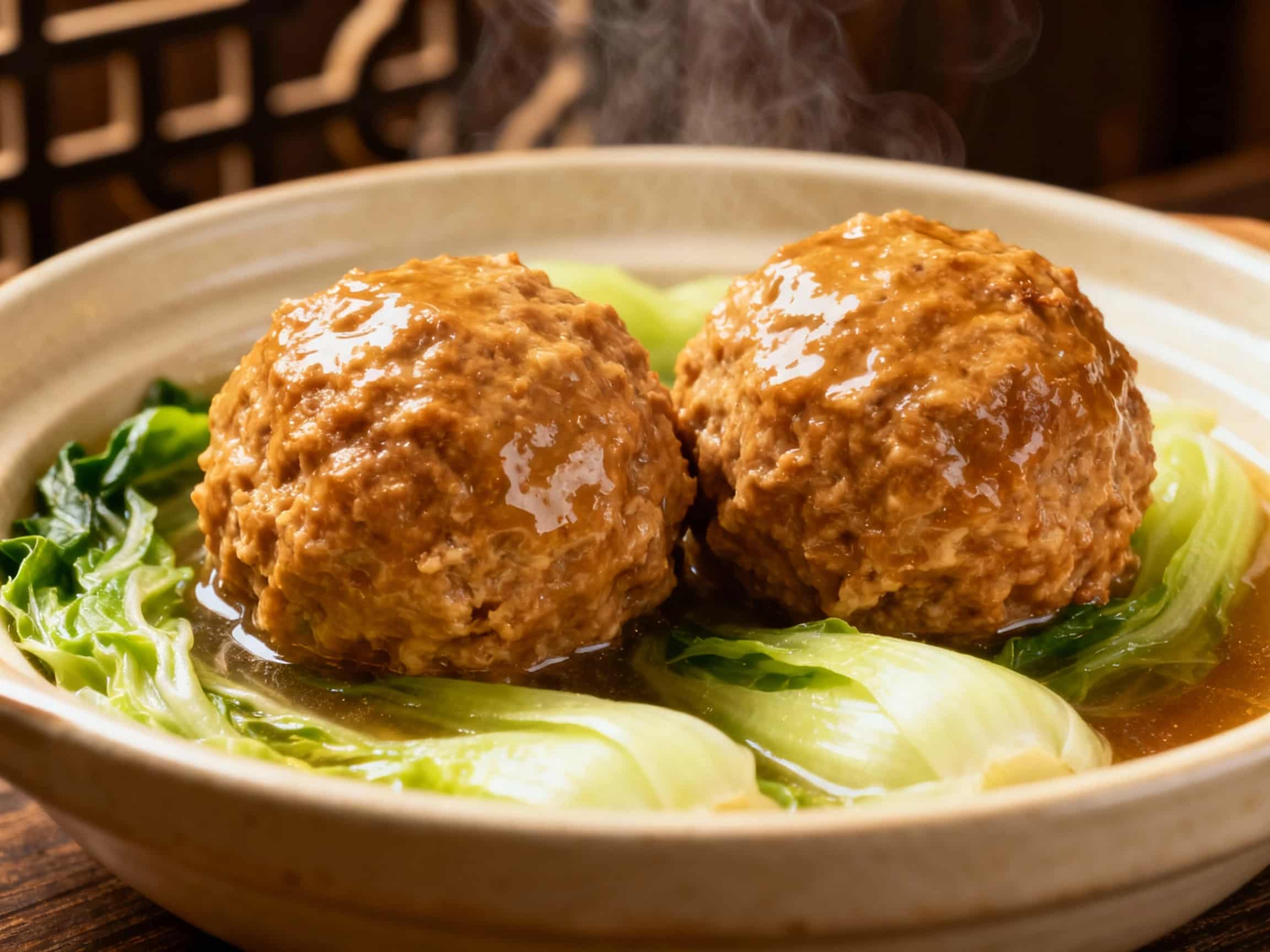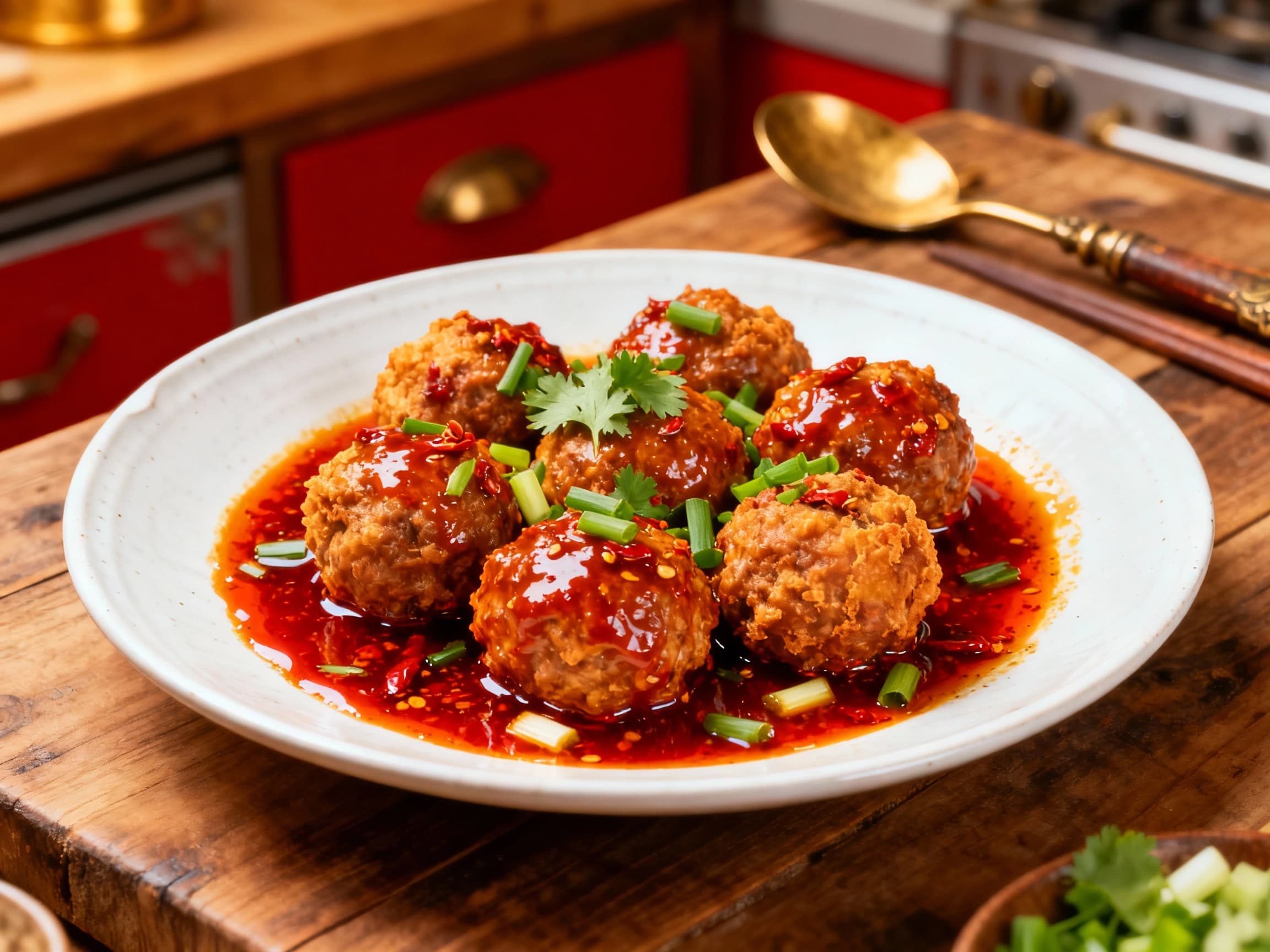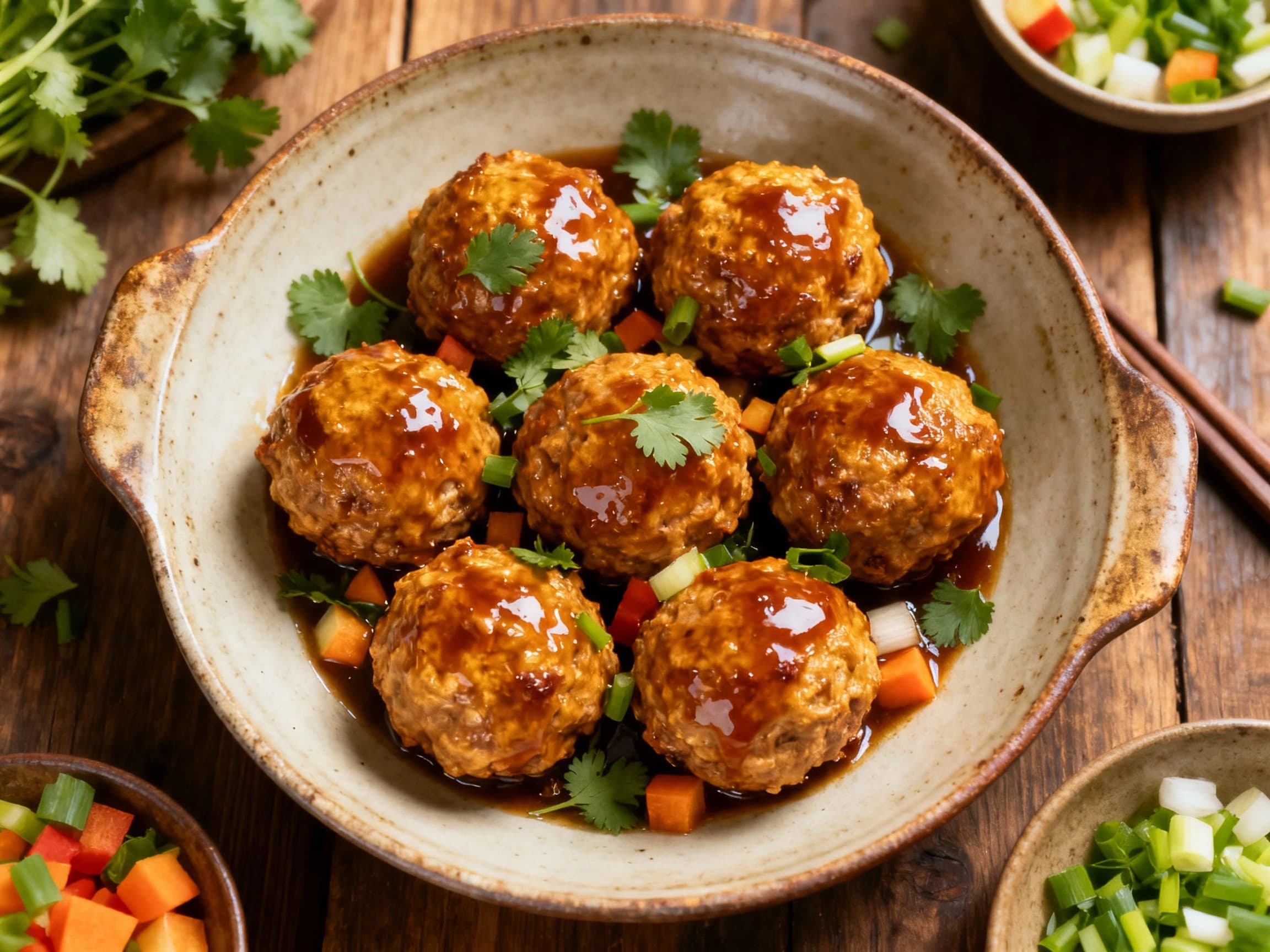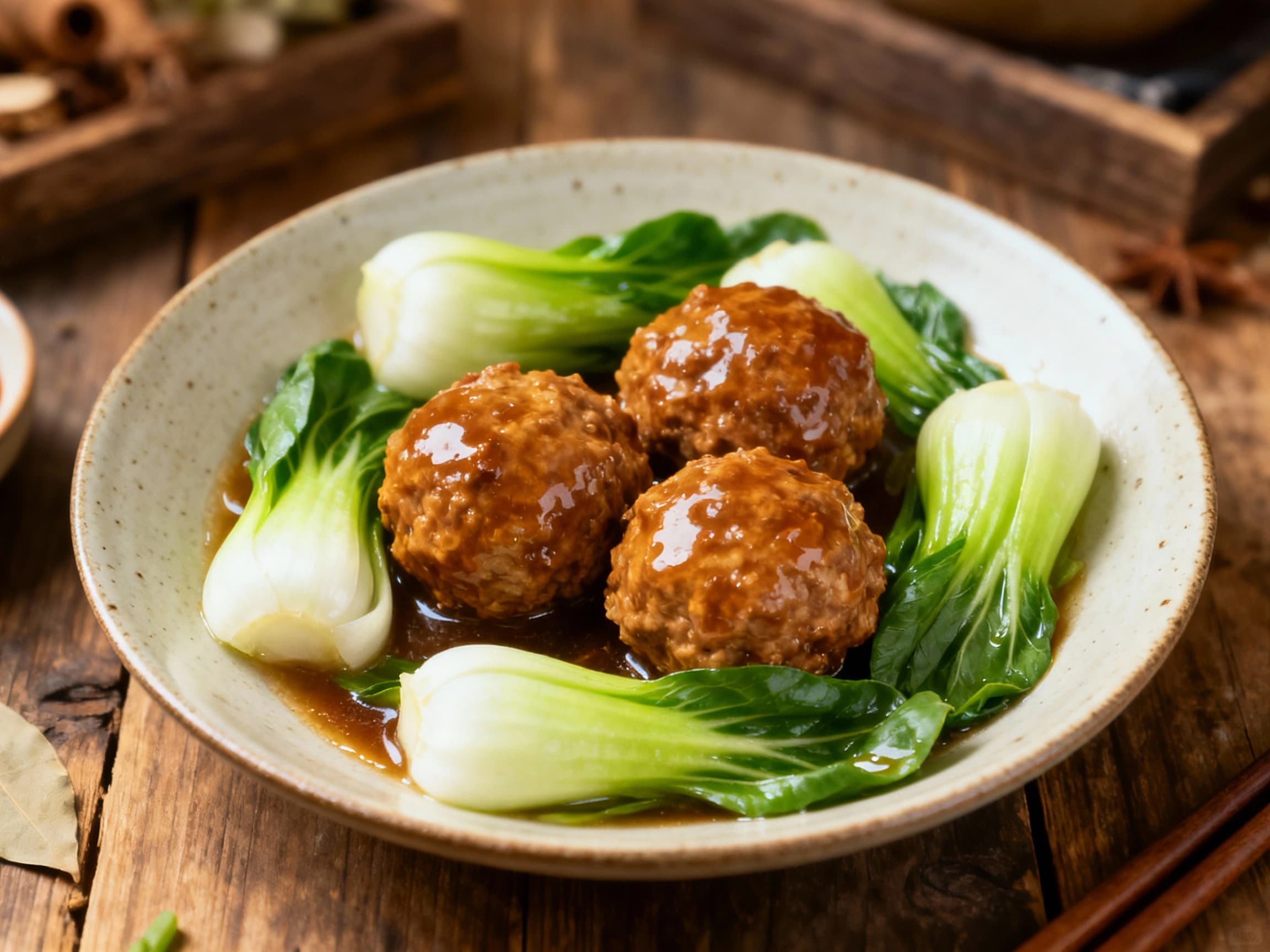
Lion's Head Meatballs
獅子頭
- Country
- China
- Region
- Huai'an
- Recipes
- 3 Recipes
Dish information
Lion's Head Meatballs, or 'Shi Zi Tou' (獅子頭), are a beloved and visually striking dish from the Huaiyang cuisine of Jiangsu province, particularly associated with the city of Yangzhou. The name translates to 'Lion's Head' due to the large size and fluffy texture of the meatballs, reminiscent of a lion's mane, often served with leafy greens that resemble the mane. Their origin is generally attributed to the Tang Dynasty (618–907 AD), although their widespread popularity and refinement occurred much later. Legend suggests the dish was created to impress Emperor Taizong of Tang during his visit to Yangzhou. The meatballs are made from coarsely chopped or hand-minced fatty pork, seasoned with ingredients like Shaoxing wine, soy sauce, ginger, and scallions, and often bound with a small amount of starch. This coarse chopping technique is crucial for achieving the signature tender and melt-in-your-mouth texture, distinguishing them from finely ground meatballs. They are typically braised slowly in a savory broth, often alongside cabbage or other vegetables, which absorb the rich flavors. Over centuries, different variations emerged, including the 'white' (steamed) and 'red' (braised in soy sauce) versions. The dish became firmly established in aristocratic and imperial cuisine. By the late Qing Dynasty and into the 20th century, Lion's Head Meatballs were a celebrated specialty in Huaiyang restaurants. Their substantial size and comforting, flavorful profile have made them a centerpiece of banquets and family meals, embodying the rich culinary heritage and delicate flavor profiles characteristic of Huaiyang cooking.
Timeline
The Tang Dynasty begins; early stories attribute the dish's creation to impress Emperor Taizong in Yangzhou.
The Tang Dynasty ends; the dish, though possibly existing, likely remained an elite or localized delicacy.
The start of the Qing Dynasty, during which Huaiyang cuisine, including Lion's Head Meatballs, gained further prestige.
The dish becomes a signature item in prominent Huaiyang restaurants, with established recipes and techniques.
Renowned chefs in Shanghai and Yangzhou refine the 'red' and 'white' versions of the meatballs.
Post-establishment of PRC, the dish is preserved as a key element of traditional Chinese banquet cuisine.
Tourism increases interest in regional Chinese cuisines, bringing greater recognition to Lion's Head Meatballs.
The dish is celebrated globally as an example of Huaiyang cuisine's emphasis on texture and subtle flavors.


